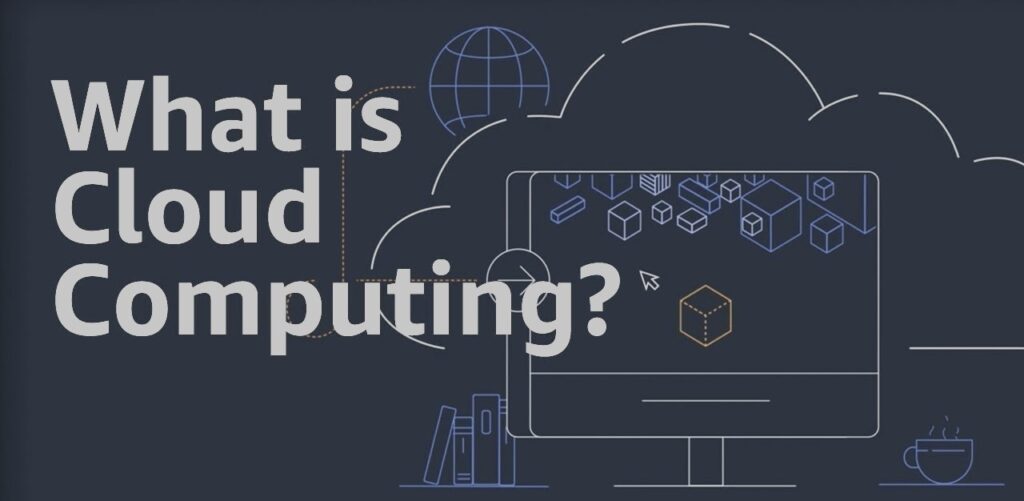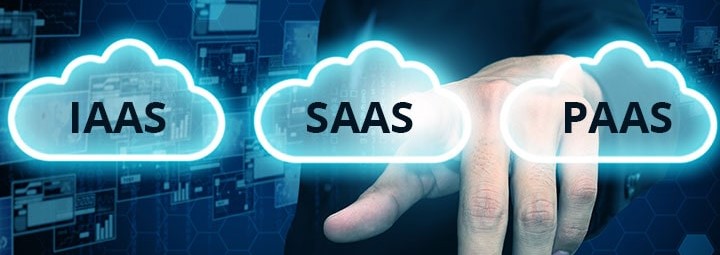
Cloud Computing Explained: A Simple Guide for Beginners

What is Cloud Computing?
Think about storing your photos on your phone. When your phone runs out of space, you might upload them to Google Photos. Now you can see your pictures from any device, anywhere. That’s cloud computing – using someone else’s computers over the internet instead of your own device.
Cloud computing means accessing programs, storing files, or using services through the internet. Instead of everything happening on your computer, it happens on powerful machines in big buildings called data centers. These buildings are like giant warehouses filled with thousands of computers working together.
Why is it Called “The Cloud”?
Engineers used to draw cloud shapes in diagrams to represent the internet. Since this computing happens “somewhere out there” on the internet, they called it cloud computing. There are no actual clouds – just lots of computers in buildings around the world.
How Does Cloud Computing Work?
Imagine the electricity in your house. You don’t know where the power plant is or how electricity gets made. You just flip a switch and the lights work. Cloud computing is similar:
You connect to the internet, open an app or website, and the service runs on computers far away. The results show up on your screen in seconds. All the hard work happens on someone else’s computers, not yours.
When you save a document to the cloud, it gets copied and stored in multiple locations. If one computer breaks, your file is safe because there are other copies elsewhere.
Types of Cloud Services

Software as a Service (SaaS)
These are complete programs you use through your web browser. You don’t install anything on your computer.
Examples include Gmail for email, Netflix for movies, Google Docs for writing, and Zoom for video calls. The company takes care of everything – updates, security, and storage. You just use the service.
Platform as a Service (PaaS)
This is mainly for people who build apps. It’s like renting a fully equipped kitchen to cook in. You don’t buy the stove or refrigerator – everything is provided. You just focus on cooking (or building your app).
Infrastructure as a Service (IaaS)
This provides basic computer resources like storage space and processing power. It’s like renting empty land with electricity and water already connected. You build whatever you want on top of it.
Types of Cloud Deployment

Public Cloud
Services available to everyone over the internet. It’s like using a public gym – many people share the equipment, but everyone has their own space and keeps their belongings separate.
Popular public clouds include Amazon Web Services, Google Cloud, and Microsoft Azure.
Private Cloud
Computer resources used by only one company. It’s like having your own private gym. More expensive but gives you complete control.
Hybrid Cloud
A mix of public and private clouds. Like keeping some things at home and storing others at a public facility when you need more space.
Benefits of Cloud Computing
Save Money
You don’t need to buy expensive computers or software. Instead, you pay monthly for what you use, like a phone bill. No need to hire people to fix computers or worry about equipment breaking down.
Access from Anywhere
Your files and programs work from any device with internet. Start working on your laptop at home, check something on your phone during lunch, and finish on a tablet in the evening. Everything stays in sync automatically.
Scale Up or Down Easily
Need more storage space? Get it instantly. Finished a big project and need less? Scale down and pay less. It’s flexible and adjusts to what you need.
Always Up to Date
Programs update themselves automatically. Security fixes happen behind the scenes. No more clicking “remind me later” for updates.
More Reliable
Professional data centers have backup power, multiple internet connections, and expert staff. Your data is often safer in the cloud than on your personal computer.
Common Concerns and Answers
Is My Data Safe?
Major cloud companies spend billions on security – more than most people or small businesses can afford. They use military-grade protection and employ security experts. However, you still need to use strong passwords and enable two-factor authentication.
What if the Internet Goes Down?
Many cloud services work offline and sync when you reconnect. Also, internet outages are usually short, and you likely have mobile data as backup.
Can I Get My Data Back?
Yes, most services let you download your data anytime. Read the terms of service to understand the process. Some services make it easier than others.
Will Costs Get Too High?
Cloud services have tools to monitor spending and set alerts. Start small and watch your usage. Most services are much cheaper than buying your own equipment.
Real Examples You Already Use
You probably use cloud computing every day without realizing it:
Social media like Facebook and Instagram run on cloud servers. When you post a photo, it’s stored in data centers and shared with your friends instantly.
Streaming services like Netflix and Spotify store millions of songs and movies in the cloud. They figure out what you want to watch and deliver it to your device.
Email services like Gmail handle billions of messages. Google’s computers sort your mail, block spam, and keep everything organized.
Online shopping sites like Amazon manage huge inventories and process millions of orders using cloud computing.
Banking apps let you check your account and pay bills because banks use cloud services for their mobile apps.
Getting Started
For Personal Use
Start with something simple like cloud storage. Try Google Drive, Dropbox, or iCloud. Upload some photos and access them from different devices. Once comfortable, try online versions of programs you already use.
For Small Business
Begin with cloud email like Gmail for business or Microsoft 365. Then move file storage and sharing to the cloud. Add other business tools gradually as you learn what works.
For Larger Organizations
Start with a plan. Identify what you want to achieve and begin with less important systems. Test thoroughly before moving critical business operations.
Choosing a Cloud Provider
Consider these factors when picking a service:
Reliability – How often is the service available? Look for 99.9% uptime or better.
Security – What protection do they offer? Do they meet industry standards for your type of business?
Cost – Does the pricing make sense? Watch out for hidden fees.
Support – Can you get help when needed? Is there good documentation and training?
Features – Does it do what you need? Is it easy to use?
The Future of Cloud Computing
Cloud computing continues to grow and improve. New developments include:
Artificial Intelligence – AI tools are becoming easier to use through cloud services. You can add smart features to your apps without being an AI expert.
Faster Connections – 5G networks and improved internet make cloud services work even better on mobile devices.
Edge Computing – Bringing cloud services closer to users for faster response times, especially important for things like self-driving cars.
Better Security – Cloud providers keep improving protection against hackers and data breaches.
Tips for Success
Start Small
Don’t try to move everything to the cloud at once. Pick one simple service and learn how it works. Then gradually add more services as you get comfortable.
Plan Ahead
Think about what you want to achieve. Do you need better file sharing? More reliable email? Cheaper software? Choose cloud services that solve your actual problems.
Train Your Team
If you’re a business, make sure everyone knows how to use the new tools. Provide training and be patient as people learn.
Monitor Usage
Keep an eye on how much you’re using and spending. Most cloud services have dashboards that show this information clearly.
Have a Backup Plan
While cloud services are very reliable, it’s still smart to have backup plans. Know how to download your data and consider using multiple services for critical needs.
Making the Switch
Moving to cloud computing doesn’t have to be scary or complicated. Millions of people and businesses have made the switch successfully. The key is taking it step by step.
Start by trying one cloud service that solves a problem you have right now. Maybe you need more storage space for photos, or you want to share files with family members. Pick a service, try it for a few weeks, and see how it works for you.
Once you’re comfortable with one service, you can explore others. The skills you learn with one cloud service often work with others too.
Remember, you’re not locked in forever. Most services make it easy to get your data back if you decide to switch or stop using the service.
Conclusion
Cloud computing has changed how we use technology. It makes powerful computer services available to everyone, not just big companies with lots of money. Whether you want to backup your family photos, run a small business, or work with a team spread around the world, cloud computing has tools that can help.
The best part is that cloud computing keeps getting better, cheaper, and easier to use. What used to require expensive equipment and technical experts is now available to anyone with an internet connection.
Don’t feel like you need to understand everything about cloud computing before you start. Pick one simple service that interests you and give it a try. You’ll quickly discover how cloud computing can make your digital life easier, more organized, and more secure.
The future of technology is in the cloud, and that future is available to you today. Take the first step and see what cloud computing can do for you.
















Post Comment